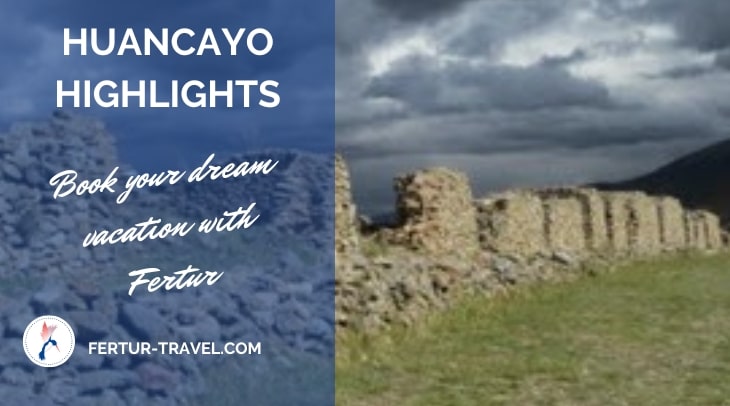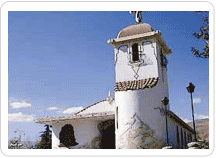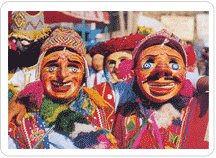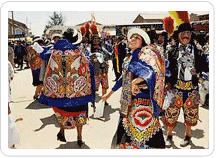

Is the chapel where Peru’s Constitutional Congress assembled in 1830. One of the few colonial-era structures remaining in Huancayo, it houses a great collection of Cusqueño style paintings.
Is a natural observatory, offering a panoramic view of the city, and an adjacent site zoo.
On the outskirts of the city, are huge, naturally eroded sandstone towers on a hillside.

The ruins of a pre-Inca temple constructed between 800 and 1200 A.D. by the Huari-Huanca culture, is located about 4 miles (8km) south of Huancayo. Discovered in 1935 by Peruvian archaeologist Federico Gálvez Durán, this impressive site has a museum displaying pottery and deformed skulls.
Was founded by Rev. San Francisco de San Jose in 1725 as a gateway for evangelizing priests to travel to lower lying Amazon jungle to convert the indigenous population. The convent, with its four cloisters, has an impressive library with some 25,000 rare volumes, and a small history museum.

A colonial town 25 miles (40km) from Huancayo on the way to La Oroya, was the first capital of Peru before the founding of Lima and features unspoiled architecture surrounded by lovely countryside.
A town renowned for its artisans who specialize in weaving textiles, rugs and alpaca wool ponchos and sweaters.